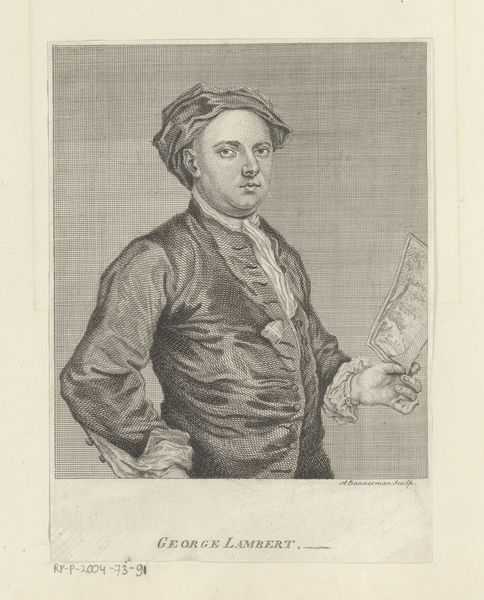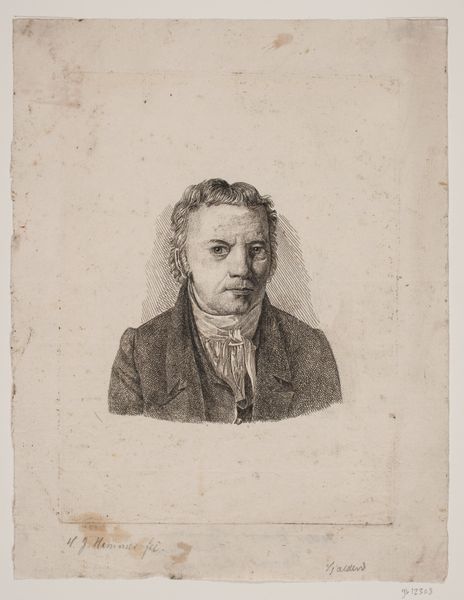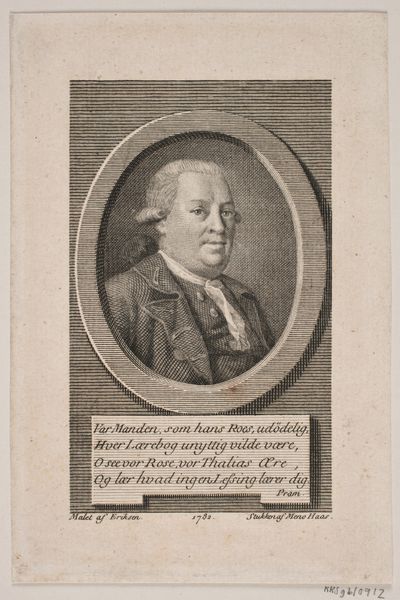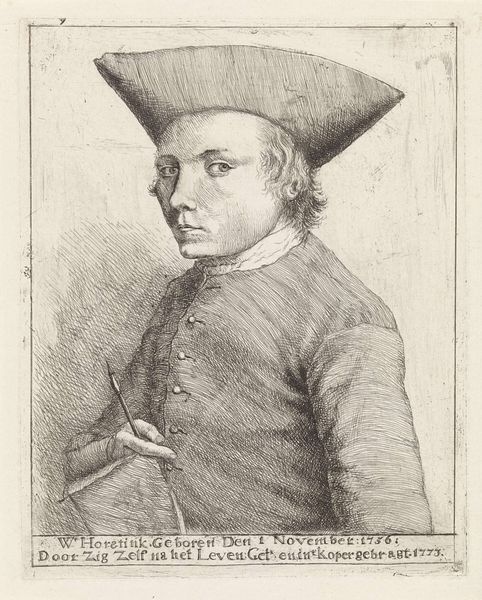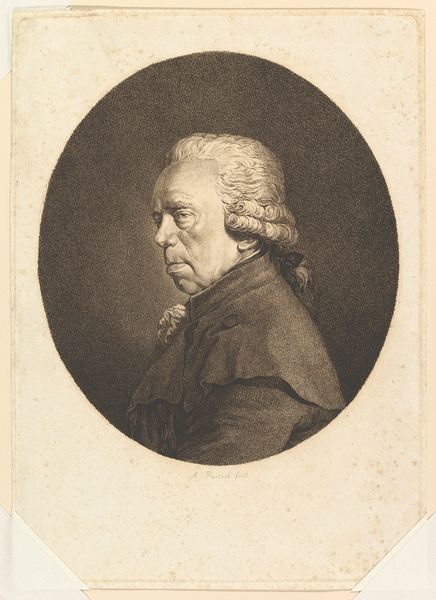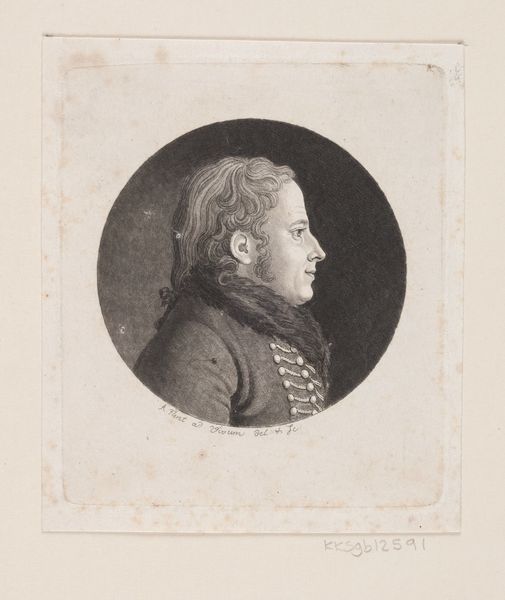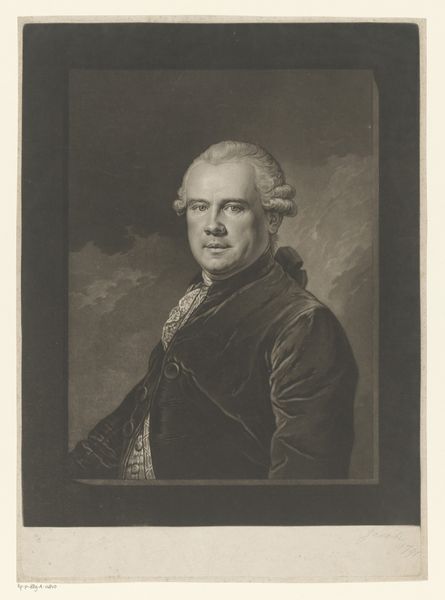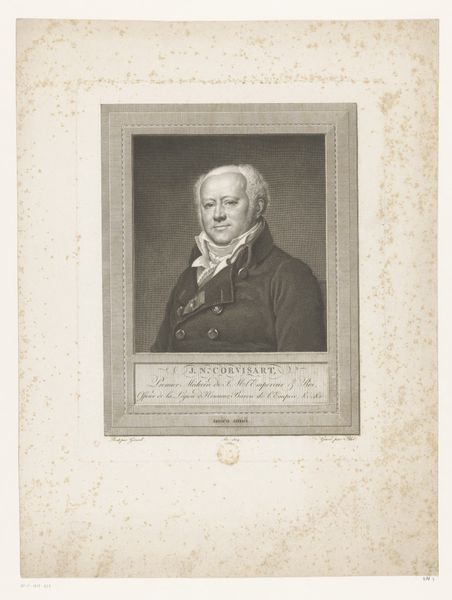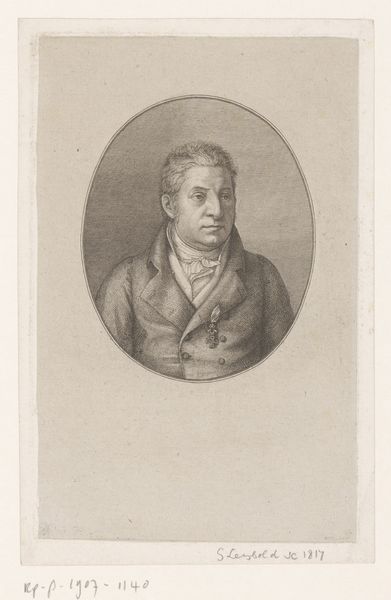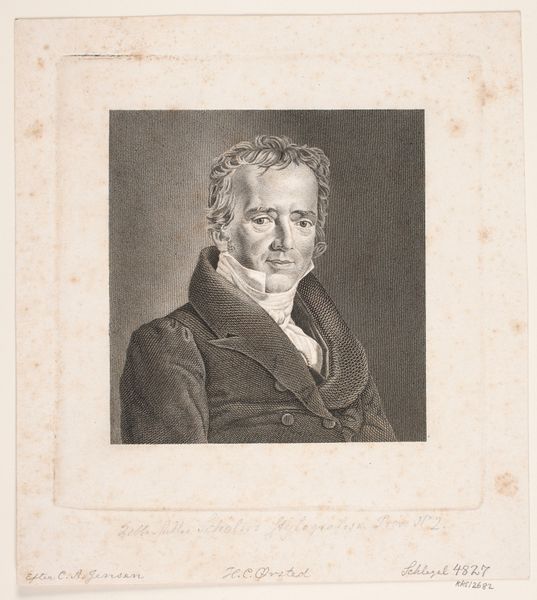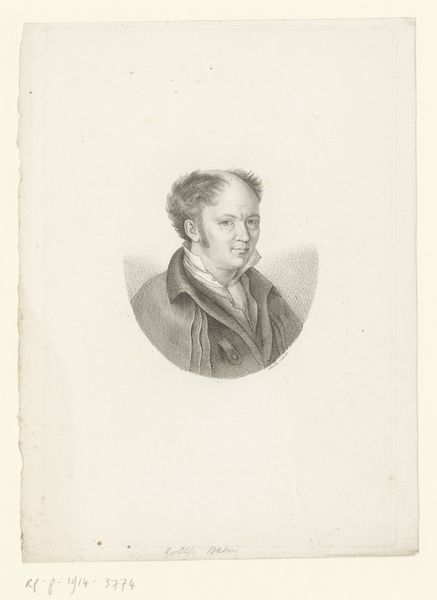
print, engraving
#
portrait
#
baroque
# print
#
history-painting
#
academic-art
#
engraving
Dimensions: height 354 mm, width 255 mm
Copyright: Rijks Museum: Open Domain
Curator: This is John Faber the Younger's 1727 engraving, "Portret van George Lambert." Lambert, you may know, was a noted landscape painter himself. What are your initial thoughts on the print, seeing it here? Editor: The tonality! Look at how Faber renders satin, the soft velvet of his cap, through these layered greys. You really see the value in a reproductive print here. It makes paintings available to wider audiences than would normally have access. Curator: Yes, notice the visual cues to Lambert's profession—the rolled-up landscape drawing in his hand, for example. It signifies not just his craft, but his engagement with representing the natural world. The gesture, the placement... it's all symbolic. Editor: Absolutely, and engravings such as these facilitated a broader market. Think about it: landowners, aspiring artists, they could all own a piece of the art world, consuming both the image and the status it conveyed. Engraving was a trade in its own right— requiring skilled labour and highly specific tools, paper and inks. Curator: This reminds me that portraiture served an important function. It offered more than mere likeness; the conventions signaled social standing, aesthetic preferences, the sitter's virtues. Here, Lambert is both artist and, in a sense, a model of cultivated taste. Note the almost nonchalant, relaxed pose—the visual rhetoric whispers 'success' and ‘assured skill’. Editor: Considering the relatively recent invention of mezzotint engraving at the time, which revolutionized printmaking with the possibility of softer graduations of tone and detail, you do start thinking about consumption as it became newly democratized, mass reproducibility allowed people like George Lambert to spread his brand to the upper reaches of society. Curator: That is a solid point! The visual language, embedded so meticulously into such portraits of artistic success like "Portret van George Lambert," clearly broadcast their subject’s cultivated taste and sophisticated mindset of that era, an aesthetic ideal embraced even today! Editor: Precisely! It all speaks volumes about the economic and material realities shaping our engagement with art, both then and now.
Comments
No comments
Be the first to comment and join the conversation on the ultimate creative platform.
